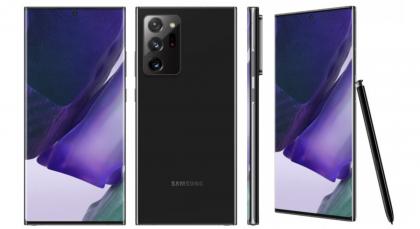Samsung launches several new AMOLED devices, including the Note 20 and the Galaxy Z Fold 2
Samsung announced several new OLED devices yesterday. We'll start with the new Galaxy Note 20 which sports a 6.7-inch 1080x2400 HDR10+ Super AMOLED Plus display (which could mean this is an RGB display, not a Pentile one). The Galaxy Note 20 Ultra has a larger 6.9-inch 1440x3088 Dynamic AMOLED. The display supports a refresh rate of 120Hz at Full-HD resolution and 60Hz at QHD. According to the Elec in Korea, the Note 20 Ultra display has an LTPO backplane (which Samsung calls HOP).

Next up is the company's 2nd generation Galaxy Z Fold 2 that is an update to the original fold with a larger internal foldable display at 7.6" 1768x2208 HDR10+ 120Hz Dynamic AMOLED and also a larger 6.23" 816x2260 Super AMOLED cover display. The Fold 2 also improves the hinge design and sports an ultra-thin-glass cover (like the Galaxy Z Flip).










